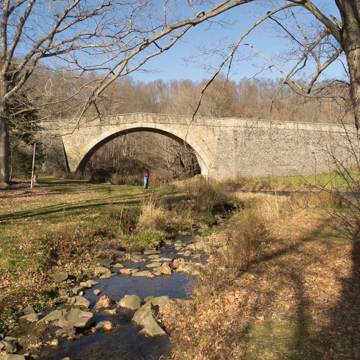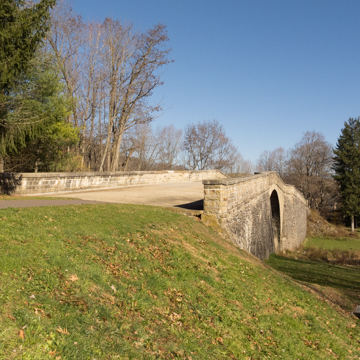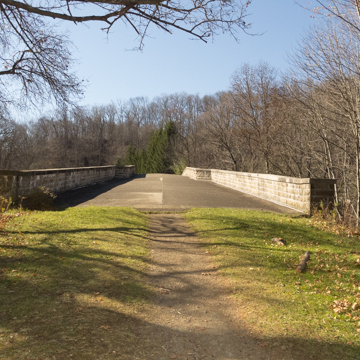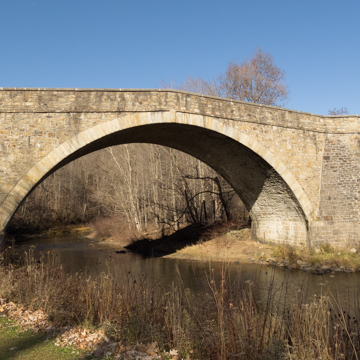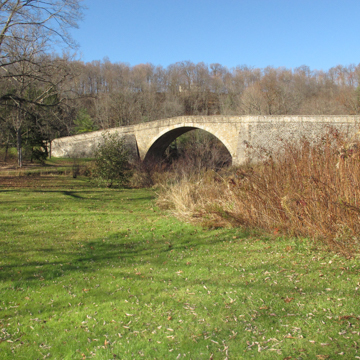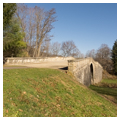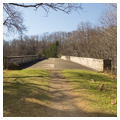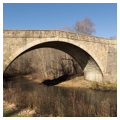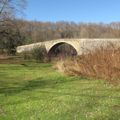Casselman Bridge represents the technical achievements required to complete the National Road between Cumberland and the Ohio River during the early National period. Rugged terrain presented a significant challenge to the transport of goods and the early commercial development of this mountainous region. A signature engineering achievement of its day, the bridge was the largest single-arch stone span in the United States at the time of its completion, stretching 48 feet between abutments. The total span of nearly 360 feet brought the National Road across the Casselman River in what is now Garrett County.
Portions of the old National Road became the right-of-way for U.S. 40 in 1925, but the Casselman Bridge was by-passed entirely after 1933. Small sections of the original road are preserved as part of Casselman River Bridge State Park. Wilson’s Bridge (1819; Silas Harry builder; Independence Road), another more typical early National Road stone arch bridge with five spans, has been preserved as a small park where it crosses Conococheague Creek seven miles west of Hagerstown.















